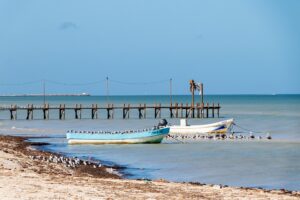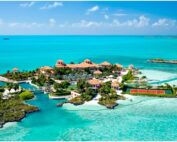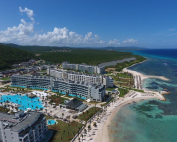
By Frank Martin
Sargassum is a marine alga that inhabits the world’s temperate and tropical oceans in shallow waters and coral reefs.
It is also an increasingly feared enemy by the tourism industry in the Caribbean and especially on some Mexican beaches.
It may seem harmless at first glance. But it will suffice to mention a feared phenomenon linked to its increase in the seas to fear it: climate change with its ally global warming.
One scientific discovery that seems irrefutable is that abnormally warming of world’s seas are causing currents that are carrying more and more sargassum into the Caribbean including waters near the Mexican coast.
These high temperatures have been getting worse for almost a century and a half.
Something that makes the phenomenon visible is the increasingly concentration of sargassum.
Since 2015, the year in which climate change became very evident due to the temperature in the Caribbean Sea, observers have acknowledged a regional excessive amount of the algae.
The problem certainly amplified and affected Caribbean coasts from Mexico and Costa Rica and also others further away such as in Brazil, and Africa.
Observations in 2015 detected tons of sargassum in the Caribbean that turned the normally clear sea a dark brown color and worse, extended a foul odor.
The United Nations Development Program (UNDP) acknowledged receipt of the situation.
The problem caused by these algae is not only to spoil the panorama or bad odors. It is basically an economic matter.
Experts cite an eloquent example when they say that Mexico’s Riviera Maya provides half of the country’s tourism income and before 2014 very little sargassum arrived.
Very worry tourists complain about the sargassum with increasing persistence and speak openly about going elsewhere next year.
For many worldwide destinations would be a kind of Armageddon to see layers of sargassum filling the previously very blue and clear waters of enormous seas with their peculiar color.
At the moment many in the Caribbean and especially in Mexico measure the issue as it should be measured.
“This challenge requires a joint multinational effort and a global commitment”, is the concept that begins to stand out about the seaweed.
And it is not only the putrid smell. Accumulations on beautiful tourist beaches in many parts of the world, including those in the Caribbean, of algae can hamper the reproduction of much-needed species such as sea turtles.
The excess of sargassum is increasingly seen as a potent danger against the tourist industry.

MORE NEWS










